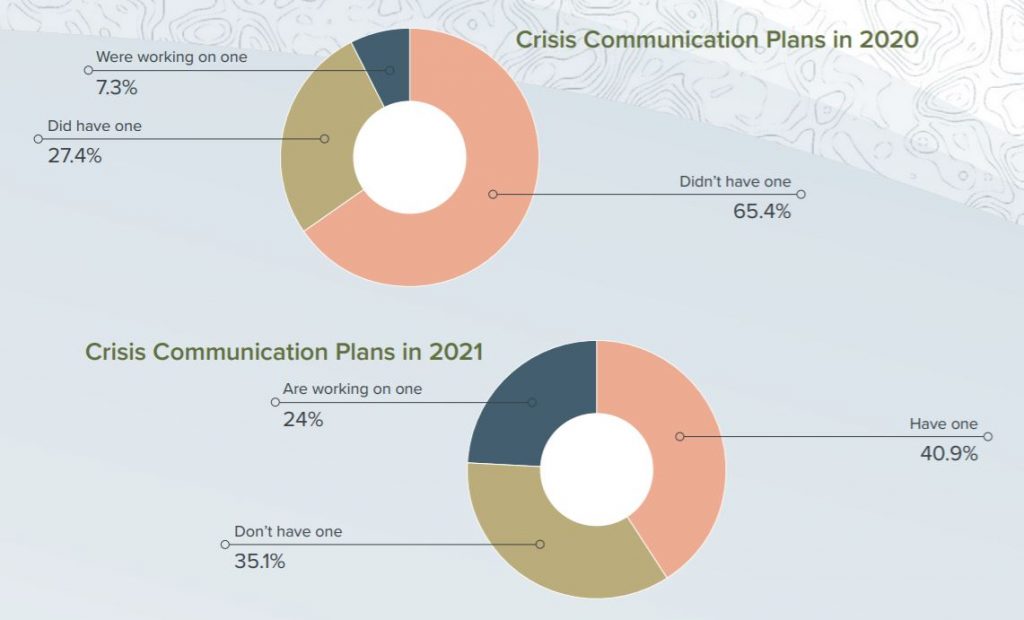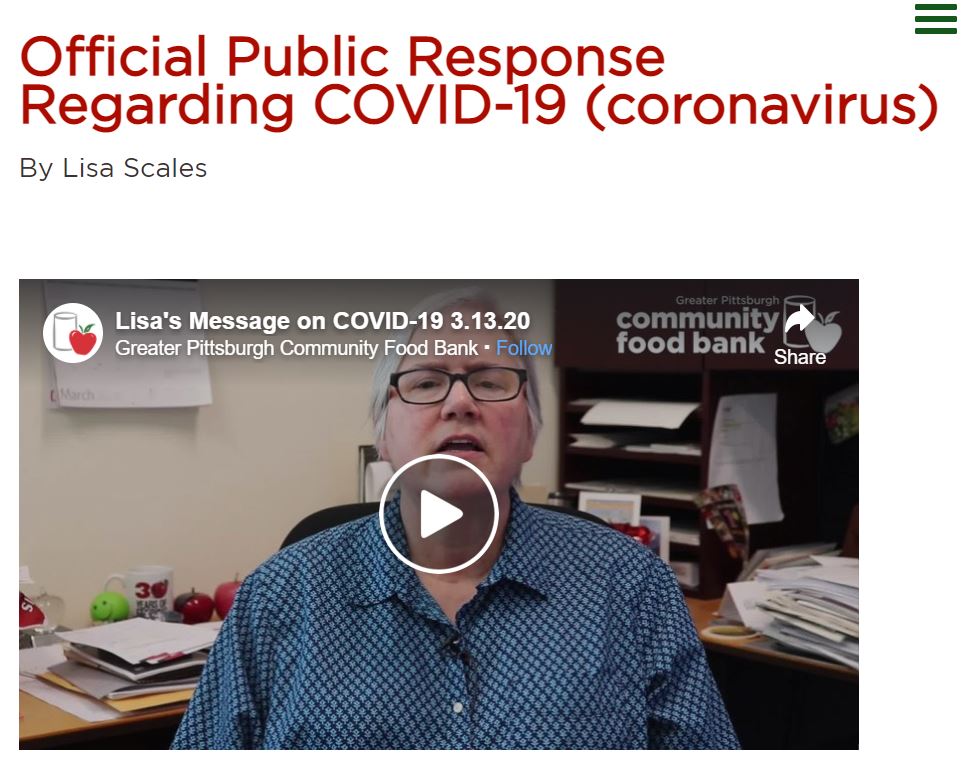In 2020 nonprofits grappled with how to communicate about current events that were rocking the world—the Black Lives Matter Movement and the COVID-19 pandemic. Should we still ask for donations? Should our nonprofit address these issues? Do our supporters want to hear from us about these issues? These questions—born out of crises—filled the nonprofit space. All these questions can be addressed with the help of a communication plan.
According to our Navigating the Unknown report, 27.4% of nonprofits had a crisis communication plan in place before 2020. At the end of the year, 40.9% of nonprofits had either created a plan or were in the process of creating one!
The best time to create a crisis communication plan isn’t when you’re in a crisis—it’s before. Obviously, no one can predict the future, so if your nonprofit doesn’t have a crisis communication plan fear not! We’re here to show you how you can create one.
What is a crisis communication plan?
A crisis communication plan’s purpose isn’t to provide employees with a fire escape route or instruct your web team on how to fix your website if it goes down. Your crisis communication plan’s purpose is to guide your organization’s public communication in response to an event that could negatively impact your organization.
There are varying levels of crises. Some issues might just require close monitoring while others may require a press release that’s approved by your CEO.
The events that you should use your crisis communication plan for are events that impact your organization’s reputation and functionality. In most cases, these events (crises) will necessitate your organization making some sort of public statement. Your events could include:
- Natural disasters
- Accusations of misconduct directed at your staff or leadership
- A sudden departure of your CEO
- Violence at a worksite
- Sudden cancellation of an event
- Donor or volunteer information is compromised
How to put together your nonprofit’s plan
Now that you know what a crisis communication plan is, it’s time to put yours together! We’ve boiled the process down into three easy steps.
Identify your key players.
Determining who should be included in your crisis communication plan is the first step to building a communication procedure. Your key players are folks whose input and advice you’ll need to resolve a crisis and craft messaging to deal with the crisis.
To determine who your key players are ask yourself:
- Whose approval do I need to issue a public statement for our nonprofit?
- Who normally writes our most prominent communications (think press releases, email announcements, etc.)?
- Which staff members have access to our social media accounts?
- Who oversees updating our website?
- Who is our go-to person for understanding tech issues or issues with our website?
Anyone you list as an answer to the questions above should be included in your crisis communication plan. For instance, Greater Pittsburgh Community Food Bank used a video recording of their CEO to address how the organization would be handling the effects of COVID-19. For most organizations, your CEO or president is the most important player you have—they can speak on behalf of your entire organization with authority!
Establish your crisis alert process.
This process can vary for different organizations. The goal of your crisis alert process is to inform your key players of a potential crisis quickly. For some nonprofits, the alert process might start with an instant message, others a phone call. Brainstorm with your key players the quickest way to communicate and share information—and don’t forget to consider after work hours! You should have a documented alert process in your crisis communication plan for the following scenarios:
- Identifying a potential crisis during work hours: Who needs to be contacted? What’s the fastest way to reach them?
- Identifying a potential crisis after work hours: Who needs to be contacted? What’s the fastest way to reach them? Pro Tip: People use Do Not Disturb at night. If it’s late, call twice within 3 minutes to override this setting.
Create your execution process.
It’s fine and dandy to identify when something has gone wrong. That said, if you don’t know how to solve the issue, you have an incomplete crisis communication plan!
Your execution process documents who is responsible for what in the midst of a crisis. Your execution process should include all the duties your key players should perform in a crisis and the order they should perform those actions in. Below is a basic execution template to get you started:
- Messaging creation: Who will be responsible for drafting talking points, emails, a social media post, or press release?
- Messaging approval: Who needs to look at your messaging before it is pushed live? Does your CEO only need to approve messaging for the most severe crises?
- Messaging execution: Who is responsible for scheduling your social posts, emails, or press releases? Do you need any additional staff to help disperse your crisis messaging?
- Feedback monitoring: Who has direct contact with your volunteers and donors and can share how your supporters are responding to the crisis? Who manages your social media accounts and can share any comments or messages you receive regarding the crisis? This stage might take you back to messaging creation and that’s okay. During a crisis your response is likely to change as your organization learns more and receives questions from key stakeholders.
- Debrief: Once your crisis has died down it’s important to evaluate your performance. Everyone in your crisis response team should discuss ways to improve your crisis response in the future. Ask questions like, what do we wish we could’ve done differently? Does our crisis communication plan need to be updated? What improvements can we make and who is responsible for executing those improvements?
Conclusion
The best time to create a crisis communication plan is now! Not when something bad occurs. Thinking about potential crises might be stressful, but it will greatly aid your organization’s response and reputation when you appear prepared and ready to handle a crisis.
For more help preparing your nonprofit for the unknown, check out these other resources to build your crisis communication strategy:




